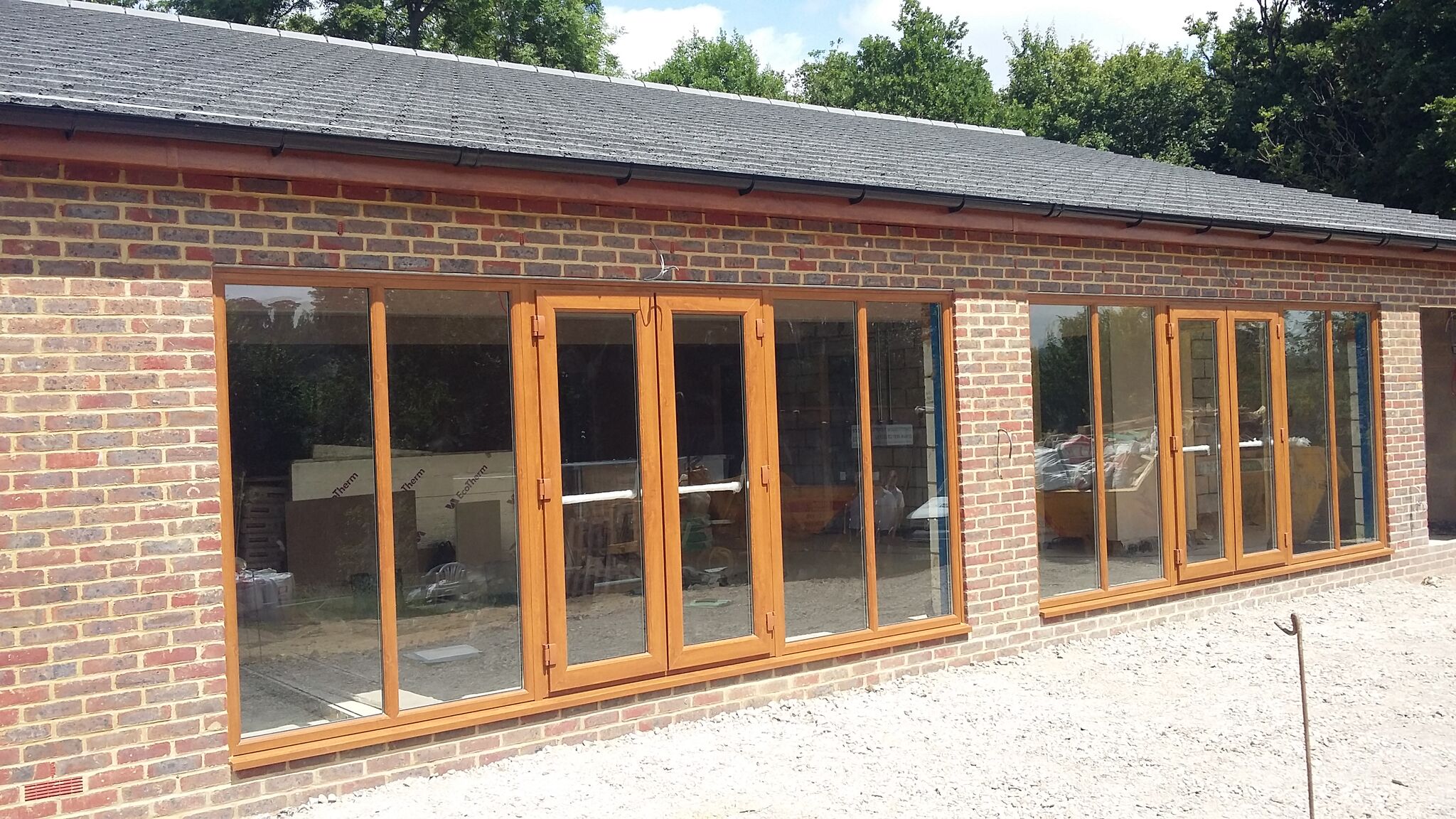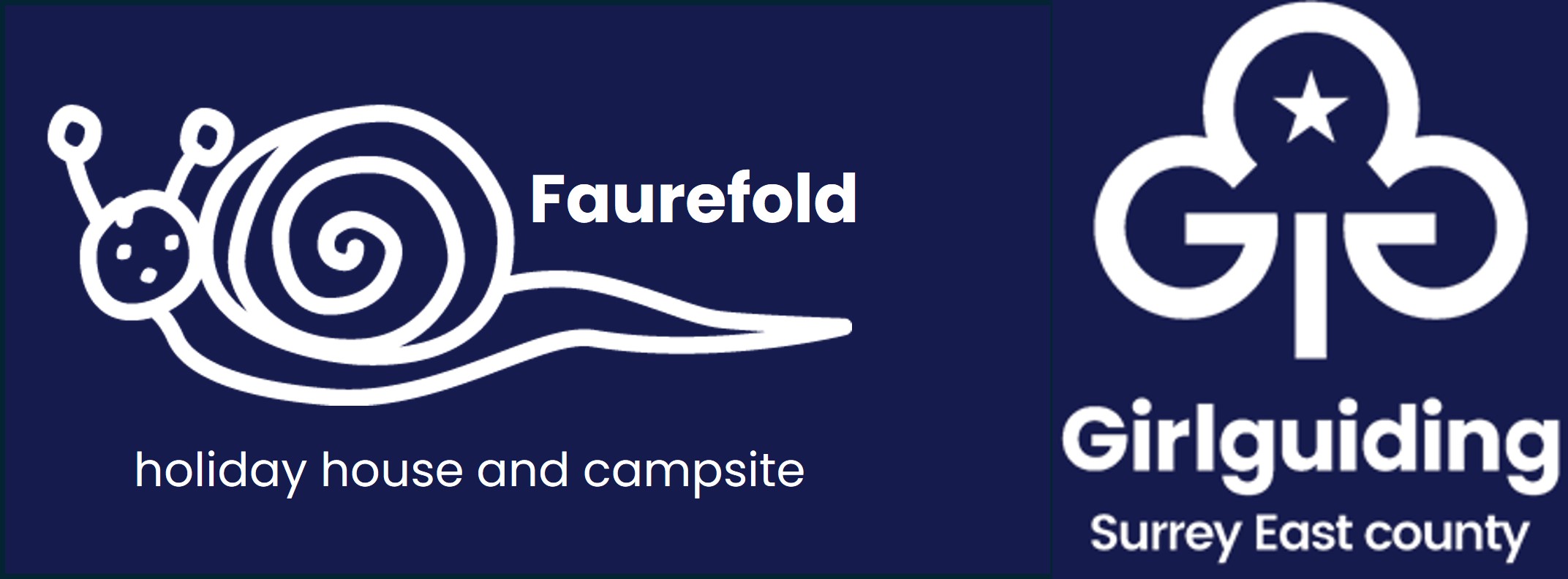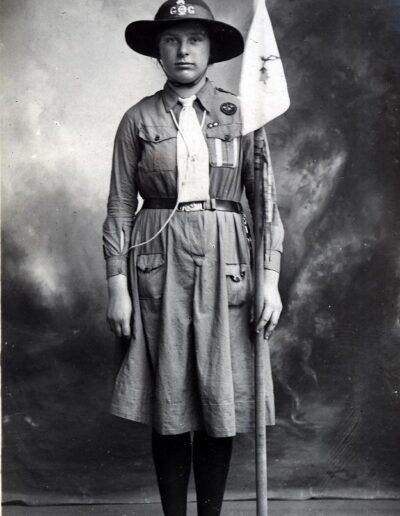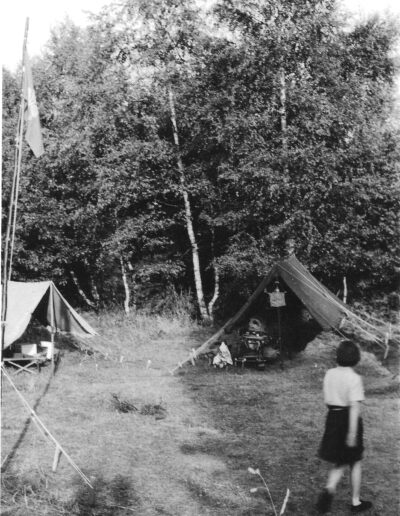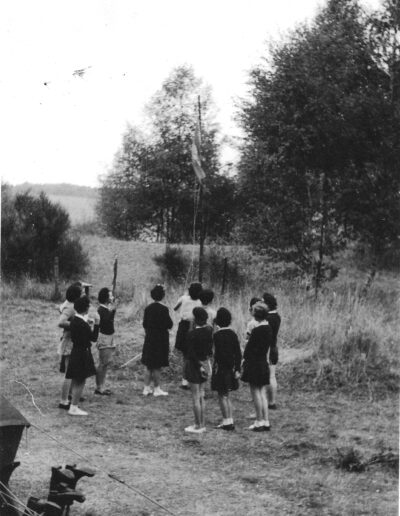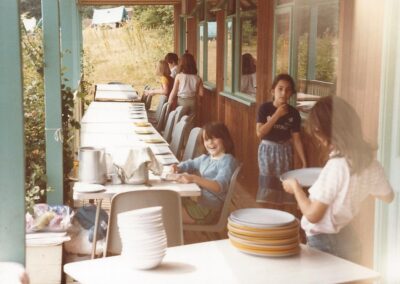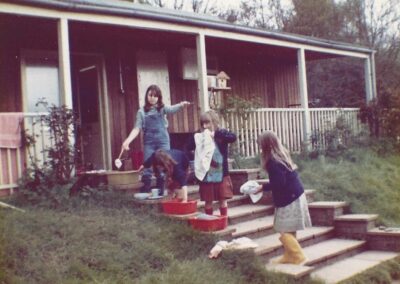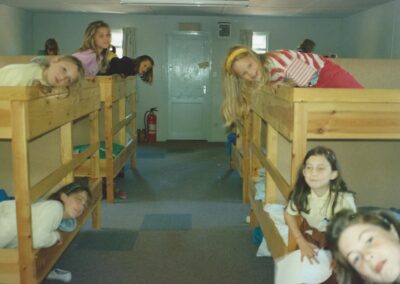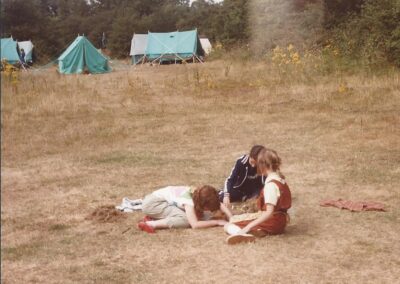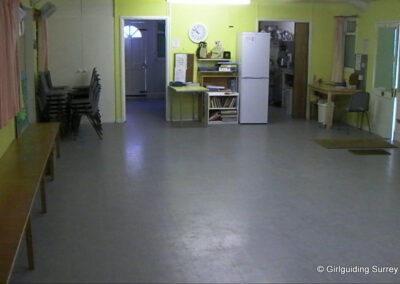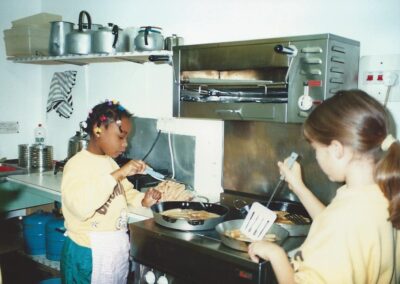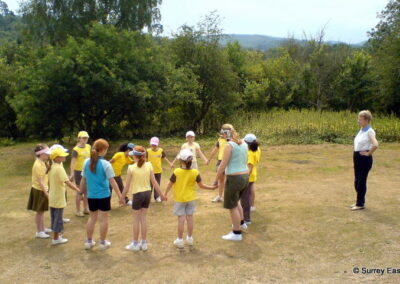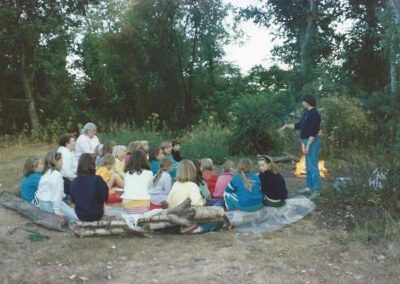Girlguiding in Westcott
The Faurefold holiday house and campsite is situated a little less than half a mile from the Village Green and is a treasured open space, used and loved by many generations of Westcott Guides, Brownies and Rainbows. Westcott has a long connection with Girlguiding. The first unit in the village was 1st Westcott Brownies, which opened on 22 November 1922.
Although we have few records in our archives, we do have two photographs from 1923 – the founding year for 1st Westcott Guides, here pictured in front of a bell tent and Dolly Rose pictured with the unit flag and looking resplendent in her pose and uniform.
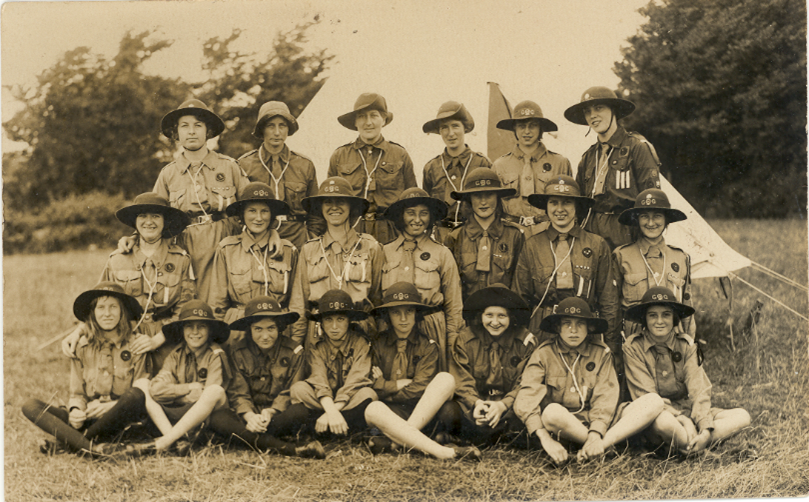
In the Beginning
…the field and wood belonged to a Mrs Faure who, at that time, lived in ‘Hacklebarney’, then the only house at the end of Lince Lane, near the footbridge over the River Mole. In the late 1950’s/early 1960’s the West Wandsworth Division of London South West Guides were looking for a campsite. The Division Camp Adviser for West Wandsworth had moved to Abinger and, after an extensive search, arrangements were made with Mrs Faure to rent the area at a ‘peppercorn’ rent of 1 shilling per year (5p in today’s money). There was just one water tap on the field and permission was given for a second tap to be installed further up the field, and for a hut to contain camp equipment to be erected in the wood near the lane. Two men from Westcott already had an allotment each on the left of the small gate allowing access to the site. The allotments were fenced and screened from the road, footpath and campsites. There were two main camping areas – one at the top of the field and the other in front of where the building now stands; also there were two or three small clearings in the woods suitable for Patrols to camp.
The Westcott campsite, as it was then known, was used not only by units from West Wandsworth but also by units from other LSW Divisions; for County Training camps, Brownie Revels and other ‘day only’ events. However, during 1969, the number of Brownie Leaders obtaining qualifications for taking Brownies away for a holiday increased and the need for a County Holiday House became apparent. Various venues were suggested – Battersea Division had a campsite at Cudham, as did the two Lambeth Divisions and East Wandsworth Division, but none of these had either an area or space suitable for the erection of a holiday house. East Wandsworth were considering giving up their site, which they did eventually, and their camp equipment was added to that at Westcott.
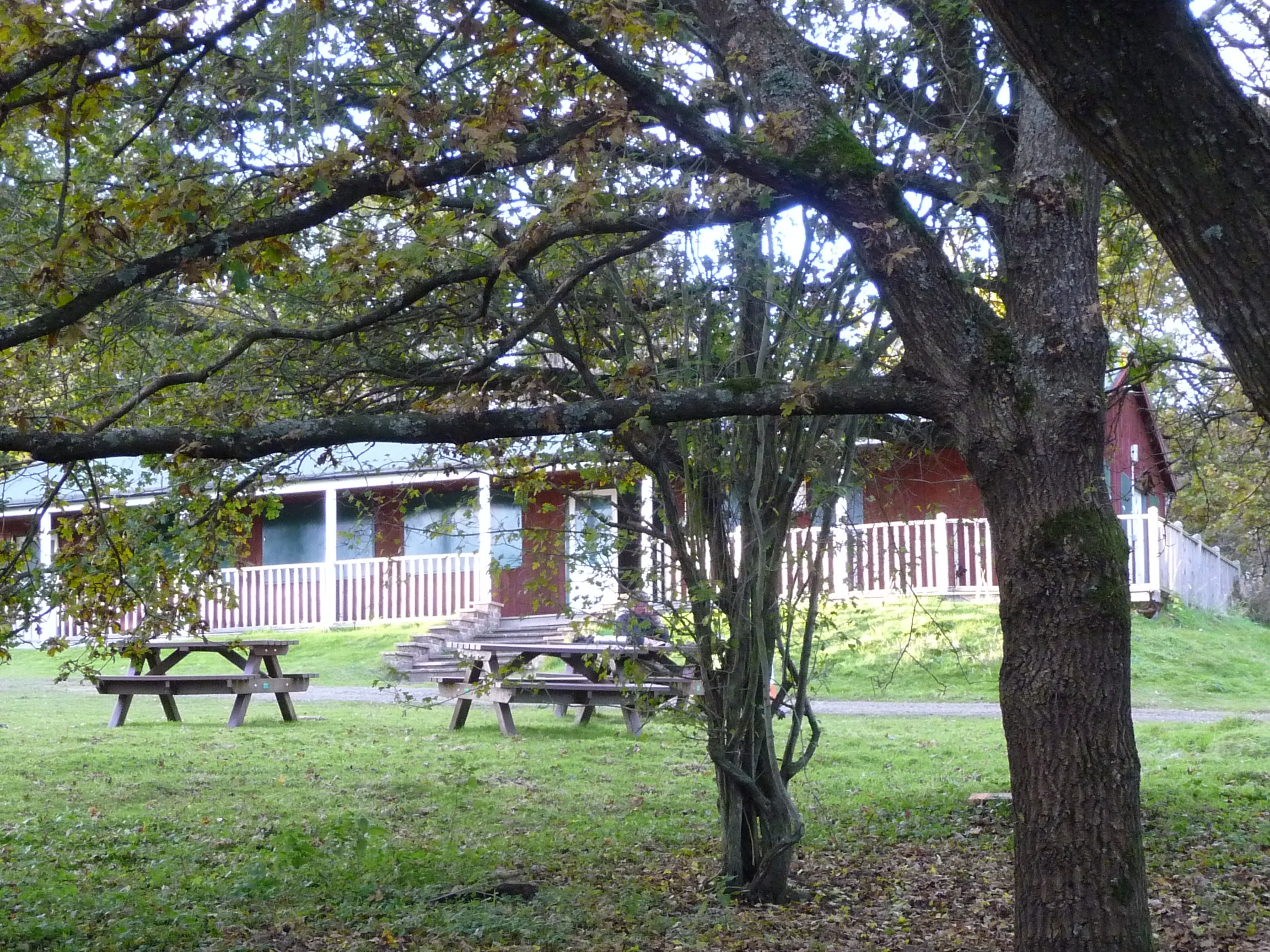
After much discussion it was agreed that the Westcott site was far and away the best for the purpose of building a holiday house. West Wandsworth Division were quite happy for the site to be taken over by the County. Mrs Faure, who was a great believer in getting children into the countryside, was approached. She was delighted and readily gave her permission. The local Council were approached and planning permission was readily granted
While discussions etc were taking place, the members of the County were busy raising funds; one way was by filling Smartie tubes with threepenny pieces – in those days Smartie sweets were sold in tubes and the old threepenny pieces just fitted inside, one tube held 5 shillings (25p today) and very many of these tubes were filled. Jumble and other sales were held; Guides held ‘Willing Shilling’ weeks in which they did jobs for other people for a small payment, and so the money came in.
In July 1970 the site was professionally surveyed and a suitable situation for the building was identified; the brother of Margaret Newman (a Guider and Trainer in LSW) who was a professional architect agreed to act as consultant and project manager. It was known that on completion of the M25 the builders’ huts were to be offered to charities at a very reasonable price and it was decided that one of these would fit the purpose.
A local firm, ‘Farm Maintenance’, were approached and agreed to be responsible for preparing the site, erecting the building and putting in the various services. Included in the price from the motorway builders was the dismantling of the building and craning it on to a low loader. Farm Maintenance had contacts with a firm with a suitable low loader. It was also agreed that before anything was done a secure fence was needed and a wire mesh 6ft high fence was erected around the entire 11 acres the site; it was planned that the building would rest on ex-railway sleepers and these needed locating and purchasing. So it all started to come together.
Farm Maintenance agreed that, in order to keep the cost of project contained, as much preparation work as possible would be done by volunteers. The first job was clearing the proposed site for the house of trees shrubs and various forms of undergrowth. As well as clearing the site for the house, a wide pathway had to be cleared to the proposed gateway – this had to be at least 8ft wide in order for the low loader to bring the building up to the proposed site.
The First Holiday House
On the first Saturday in October 1970, some 40 plus members of the County, together with husbands, fathers, boyfriends, brothers, friends etc, descended on Westcott armed with saws, spades, pruners etc etc. It needs to be remembered that at that time there was no electricity on the site so no power tools could be used. Great bonfires were lit, signaling that work had started. Working parties continued almost every weekend until Spring 1971; most Saturdays saw at least 20 people on site, with a smaller number on Sundays.
Farm Maintenance then took over the entire site – there would be no camping there that summer. Earth moving equipment arrived to level the area where the building was to be erected, the wide gate was put in place to stop itinerant travellers moving in. The building arrived as ‘flat pack’ in April 1971.
When it was on the M25 works site the building was simply four walls, a floor and a flat roof. It is understood that it was a works manager’s hut during the motorway construction. It had already been agreed that a flat roof was not a good idea, and a pitched roof was to be added. The single thickness of the walls was insufficient, so a layer of plaster board was installed inside the existing walls, making it a twin walled structure, insulated between the two layers with ‘wood wool’. When first completed the building was simply the hut from the M25 upgraded, with insulated walls, internal walls to form the kitchen, Leaders’ rooms, bathroom and toilets – the dormitory was added later
The stone work (slabs, bricks etc) forming the steps to the front door were a gift from a Guider, and Farm Maintenance donated the time and expertise to lay them; these were lovingly and carefully laid by ‘Pa’ who was the founder of the business; by then over 80 and officially retired. The veranda was an ‘extra’ which Farm Maintenance had been asked to install. Farm Maintenance also installed the cess tank for waste disposal; advice had been given that to be connected directly to the sewers on the main road would be a very, very expensive exercise as, due to the ‘difference in altitude’, ie the slope between the house and the road, several holding tanks would be needed so that the A25 was not flooded should several Brownies flush the toilets in succession! The cess tank was replaced by a septic tank in the 1990’s as being a more financially economical solution to waste disposal.
By July 1971 the house was ready for the next stage of volunteer work – painting inside and outside, fitting the kitchen, tiling in the bathroom; everything essential had been installed – the hand-basins, toilets, kitchen sink, hot water tank, cupboards in the main room and the electricity. The work surfaces in the kitchen were made by the brother of one of the Camp Advisers, the seating benches round the main room were made by another contact, as were the shutters. Everything and everywhere – doors, window frames, walls, shutters and benches needed sanding and painting – a minimum of 3 coats. The exterior alone needed 4 coats of weatherproofing applied and needed strong people with ladders and a head for heights.
Mrs Faure generously donated the cooker; many other items were funded by generous donations from individuals and units – the fridge (the fridge-freezer was a later addition), various items of games equipment, the rotary drier, almost all the kitchen bowls, basins etc, the original cutlery (which all matched as everyone saved cutlery tokens on Kellogg’s products), the beds for the adults, a number of handmade blankets etc, etc. The decision was made to have melamine plates etc and originally these all matched. The original curtains were made by the mother of one of the Camp Advisers; these have been replaced since, first by some discarded by a local day hospital, and more recently by some made and donated by a Brownie Pack from Balham & Tooting District. Before the dormitory was added the beds for the young to sleep on were ‘safari’ type beds which had to be dismantled or stacked during the day; this added another dimension to the daily chores and limited the usable space in the main room.
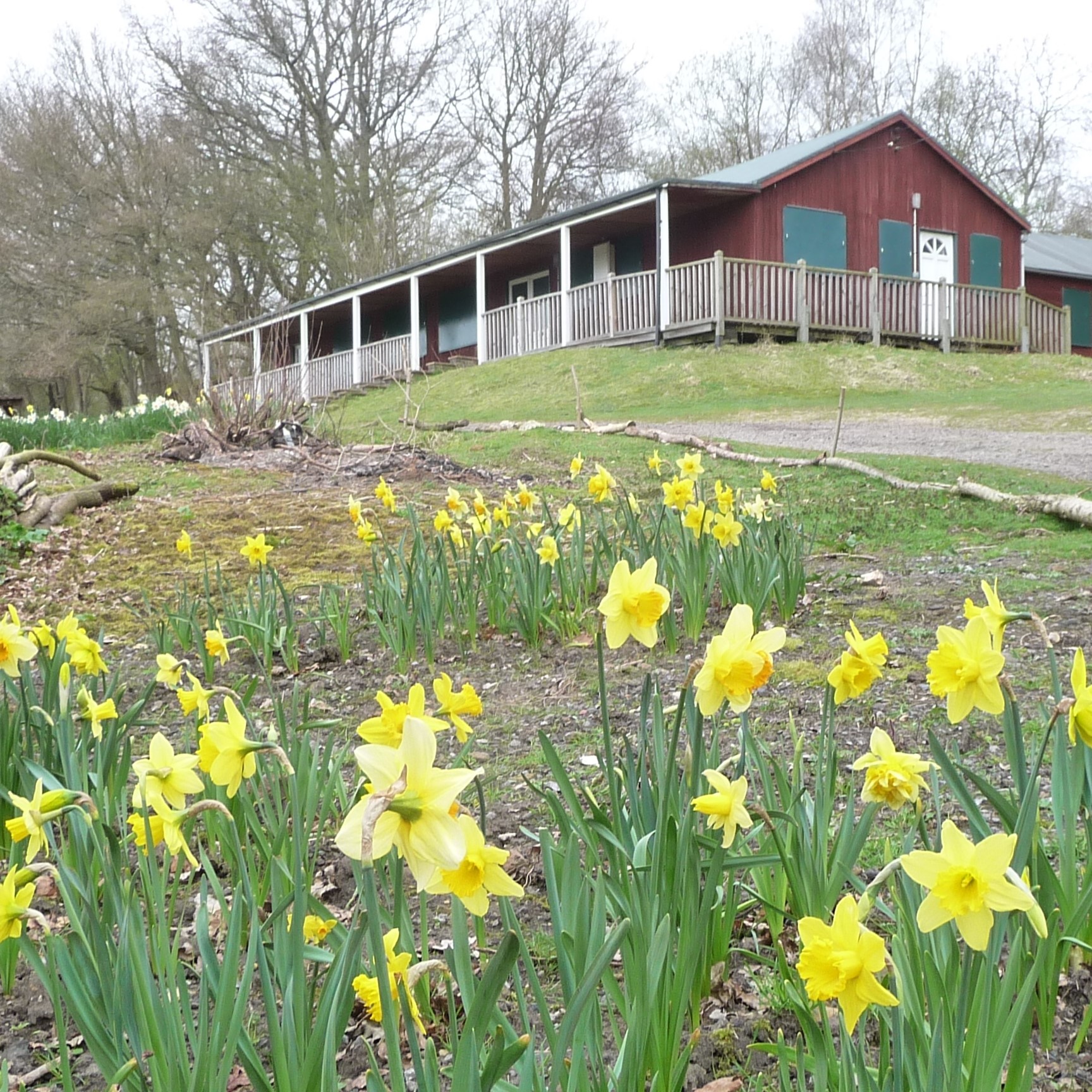
1971 Official Opening
At long last everything was almost ready for the official opening; the day before was a frenzy of activity – final painting, installing equipment, rushing off to buy some small item which had been overlooked, cleaning, polishing etc etc. A number of Guiders had taken a day’s leave to help and everyone worked well into the evening; as it got dark hunger called and a volunteer went into Dorking and returned with a large amount of Chinese takeaway food for all! An ‘instant’ garden along the frontage was installed using flowering shrubs etc from people’s gardens – it looked most effective.
The World Chief Guide, Lady Olave Baden-Powell, had been booked to perform the opening ceremony on 10th October 1971 and, according to her usual custom, she financed the main doors through an ‘Opening Doors’ gift of money she had received from the Guides of Australia. Lady BP also planted a tree near the front of the house, sadly the plaque commemorating this was stolen a number of years ago and the tree had to be replaced at least twice before it finally flourished. The building was blessed by a clergyman contact and everyone had an opportunity to view the new facility. Many members of London South West County attended the opening ceremony along with Mrs Faure and a number of local dignitaries. Arrangements had been made to park the cars in what is now UNUM and the local police were out in force. It was a grand occasion on a lovely sunny afternoon.
The name finally chosen for the building was ‘Faurefold’; this was to acknowledge the help and generosity of Mrs Faure; but it could also be construed as ‘fourfold’, the then four ‘arms’ of the Association – Brownies, Guides, Rangers and Adult members – Rainbows came later
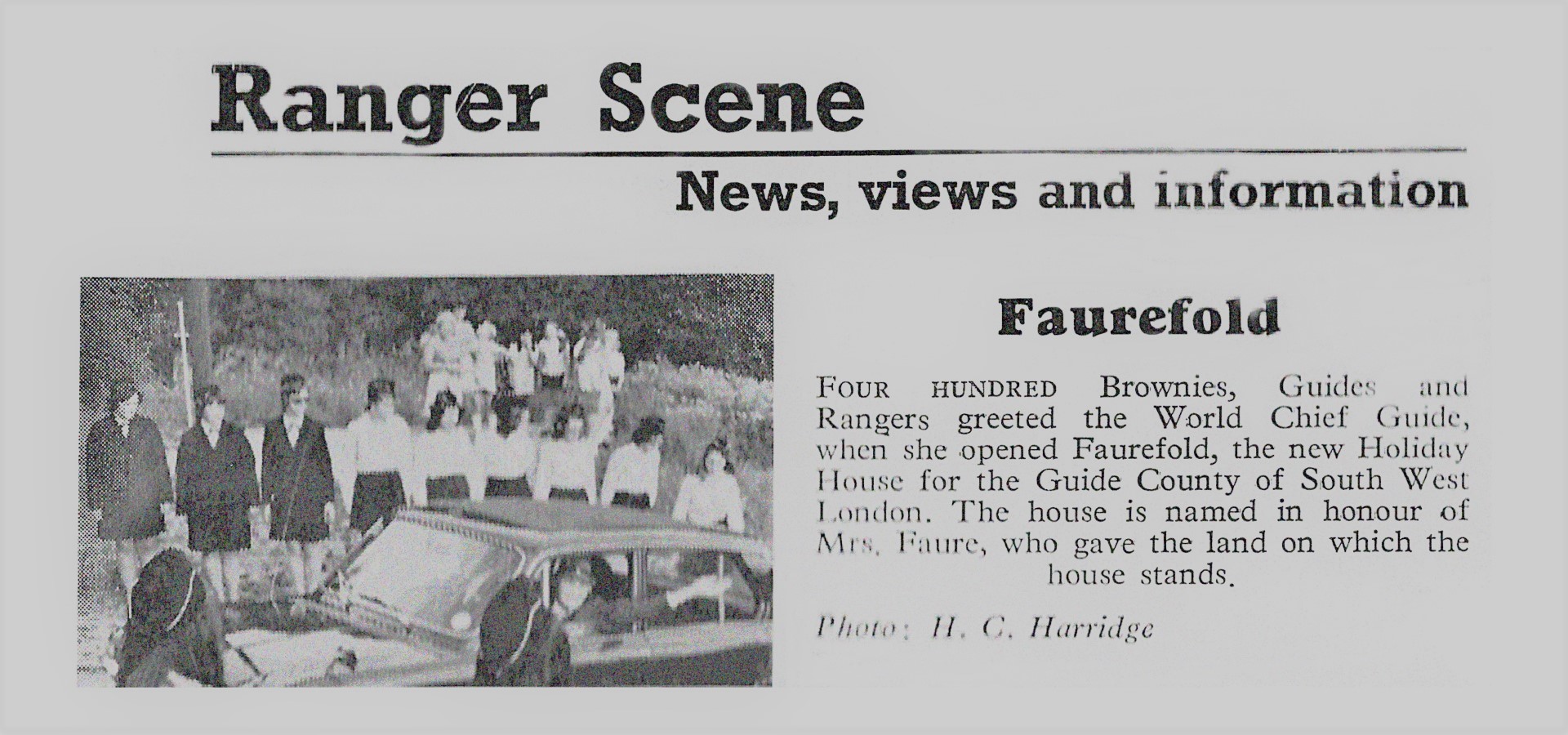
45 years of service
Quite an assortment of wildlife visited the grounds – deer, rabbits, foxes, squirrels and numerous birds. Various attempts were made to have a garden in front of the house; originally it was a rose bed, but this succumbed as no one could give it all the attention it needed, though the local deer did enjoy eating the bushes. A Brownie Pack planted daffodils in memory of their Guider, but these didn’t really flourish for various reasons, mainly the squirrels digging up the bulbs.
A tumble drier was installed to aid the drying of clothes, towels etc and then when all the local launderettes closed a washing machine was added; a walkway was added to the back of the house to make the moving of shutters easier; picnic benches in the grounds came as gifts or memorials to much loved and respected Guiders. Rainbows came along and have used the site for day events; Trefoil Guild members have used the house for their AGM and lunch; terminology has changed within Guiding; London South West has re-organised its administration, no longer having Divisions but 8 Districts; both of the allotment holders have died and the allotments have now become derelict as replacement tenants could not be found; the camp equipment hut has been moved from the woods to near the holiday house.
When the house was originally completed, the County looked towards using it for some 10 years or so before having to consider replacement in some form, but times changed and the house kept going, hosting residential events until it was finally demolished to make way for the current building in 2016 – an amazing 45 years of service!
The need to rebuild
By 2010, the need to rebuild the house used for residential events was pressing and Girlguiding London South West recognised that the task of fundraising was beyond their abilities. With the site located within Girlguiding Surrey East County and with many local users and volunteers from the immediate area, agreement was reached site to be leased to Surrey East, who have been managing the site since the summer of 2011. Surrey East quickly gained planning permission for a replacement building and a major fundraising campaign began.
Whilst fundraising for the new building continued the car park was built and a new camp store erected. The campsite had become very overgrown so this area was cleared, levelled and the grass reseeded.
The old house was closed in 2016, the building was demolished and the task of rebuilding began.
Construction continued through 2017, whilst fundraising continued and a host of volunteers dedicated time and energy to making the project happen, working on the grounds, fitting the kitchen, painting and decorating and rebuilding the old bunk beds!
The Official (re)-Opening of Faurefold took place on 12 May 2018 (read more) and the new house now welcomes groups almost every weekend.
